2022 Impact Stories
AS TOLD BY NONPROFITS
of the Big Y Community Bag Program
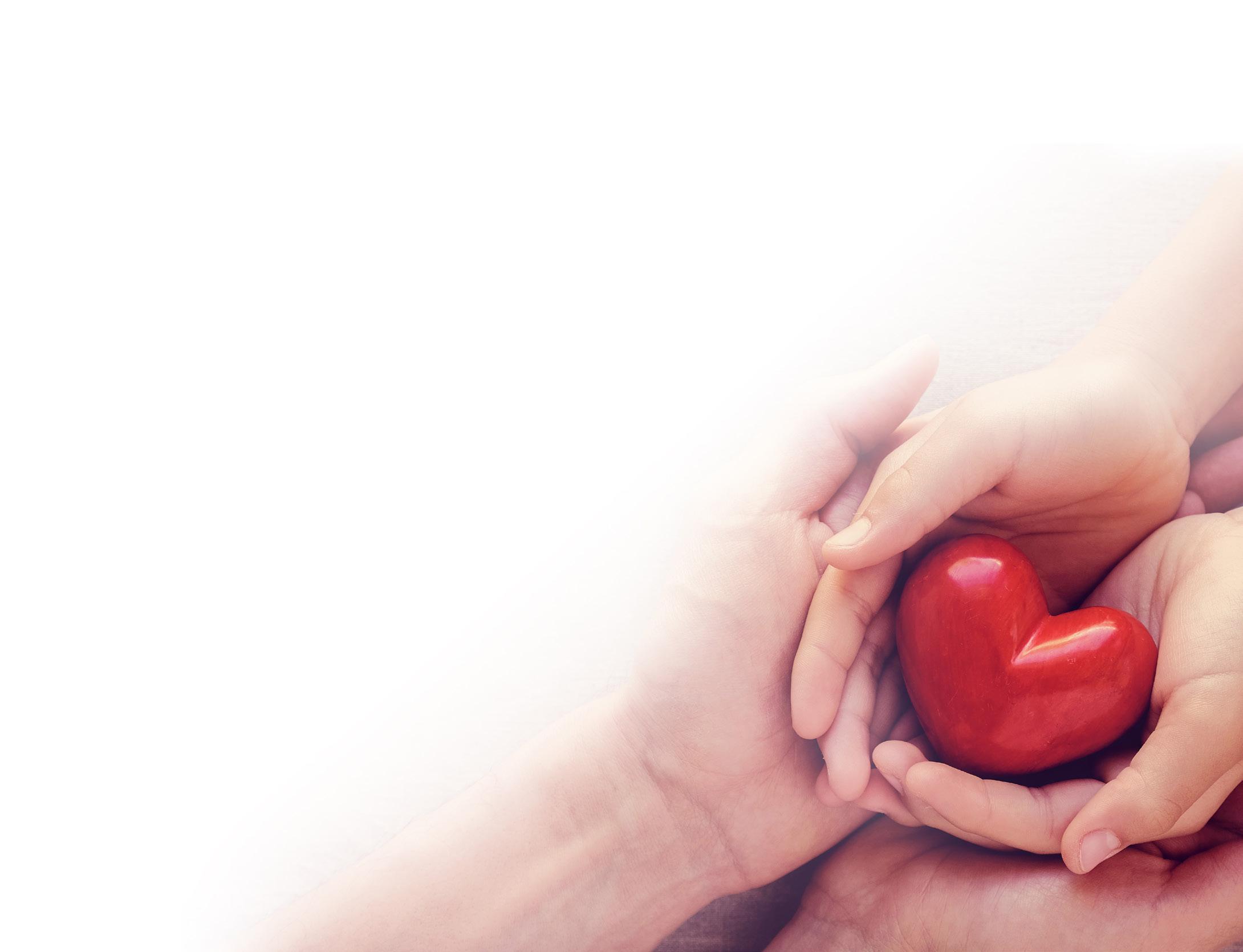


Since late 2021, the PS It Matters Nonprofit Engagement Team has conducted interviews with over 70 nonprofits that have benefited from Bags 4 My Cause or Bloomin’ 4 Good. The resulting Impact Stories highlight each nonprofit’s mission, services they provide and the needs they fill. Learning from these organizations firsthand is inspiring and emphasizes the importance of the Community Bag Program and impact on the local Big Y community.
Enclosed are four stories of nonprofits that have benefited from the Big Y Community Bag Program. More stories can be found on the Big Y Program Website: bigy.2givelocal.com/stories
In 2023, the Nonprofit Engagement Team will continue conversations with nonprofits creating additional Impact Stories—at least one a month—and feedback calls with 200 to 300 organizations. These calls will focus on how nonprofits interact with the program, the marketing tools they use, additional tools they would like to see on the Program Website and how the Community Bag Program fits into their overall fundraising strategy. We plan to adjust our outreach to nonprofits based on feedback and report overall findings in early 2024.
We look forward to continuing the success of the Big Y Community Bag Program in 2023. We truly value your partnership and the impact we have together on local nonprofits in your banner’s footprint. Thank you for contributing to the positive outcomes for Big Y, PS It Matters and the local community!
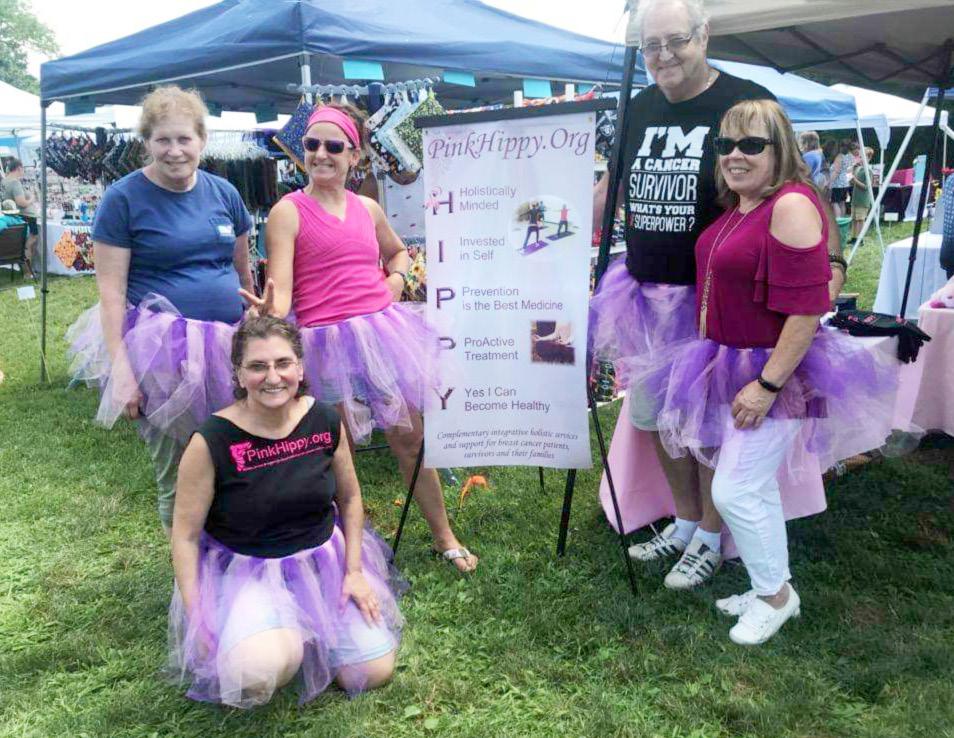
When PinkHippy does public events, like in this photo, they wear signature pink and purple tutus. As co-founder and board president Del Bachand says, “Everything is done with a warm heart and humor.” Big Y supports this innovative nonprofit organization through its Community Bag Program.
us about PinkHippy.
Our mission is to provide integrative therapies, connections, services and comfort items to cancer patients in our local communities. We serve the communities of south-central Massachusetts, northeastern Connecticut and northwestern Rhode Island. We modeled ourselves after the Zakim Center in Boston that provides wonderful services, but they’re not easily accessible to patients in this area. I know as a survivor myself and currently a caregiver for my husband, who’s battling cancer, that travel is not always a comfortable option. So, if they can get something close to home, so much the better.
vided services. One of them was an oncology massage therapist who inspired us through her own work to provide free oncology massage to patients.
So, with some gumption and some guidance, we kicked off PinkHippy with a series of free lectures that introduced all the different therapies we were planning to provide. Our first grant came from Webster Five to start our oncology yoga program, which was our first offering back in 2014, and we’ve just grown from there.
nonprof-
We were founded in the fall of 2013 and officially organized as a 501(c)(3) nonprofit in February of 2014. We started literally with a dream, and it came from the shared frustration of not being able to get services in this area. Five women, including myself, got together to form the nonprofit. Each of us was touched in some way by cancer. Two other wonderful women who supported that dream donated the funds needed to get the paperwork started and then with some contacts, we reached out to different people that we knew who pro-
As far as we know, we are the only program in the area that provides one-on-one patient-to-survivor support. It’s called the Bosom Buddy Network, and we match a survivor as closely with a patient as possible. Depending on what’s going on with the current patient, we find a survivor that went through similar circumstances and create a support partnership. There are a lot of message boards out there and chat rooms and Facebook pages, but most people don’t want to do that. They want to actually hear a human voice or meet a person.
Once a year in October, we do a huge event, and we bring current patients together with survivors. And I think the nicest thing I saw was two complete strangers–one, a survivor and one, a cancer patient–with very different backgrounds, very different ages and cultures who sat across from each other during the event, and they left hugging and exchanging phone numbers. It just cemented why we do Bosom Buddy the way we do.
As far as we know, we are the only program in the area that provides one-on-one patient-to-survivor support.
Another thing that sets us apart is that all of our programs are offered at no cost. We charge nothing to patients. A lot of our programs are also open to survivors and families who are caregivers of the patients, also at no cost.
We have a special yoga class that we offer cancer patients that takes into account things like having a port inserted, which is really important. Again, from frustration, we developed our own training program for yoga instructors to teach the class because the programs out there were not equipped to do so.
We changed the names of the yoga poses. Patients are spoken to by the medical community in terms that most of them can’t wrap their heads around. So, we didn’t want them to have one more term thrown at them that they didn’t understand and had to look up. So, we made up names for everything with the help of the patients and they’re all fun names. It’s a very relaxing yoga practice and it works on their breathing and their movement and their range of motion. Many of them have never tried yoga before, and they spend a lot of time sitting or lying down. This gets the whole body moving.
And we offer meditation, art therapy and music therapy. We have oncology massage, reflexology, lymphatic drainage and Reiki. Those are all free as well as a host of comfort items. We have comfort pillows that are made by all volunteers who get together and sew, and they’re really soft, squishy and machine washable. And they do everything from cradling a port to helping wear a seatbelt after surgery, something so simple most people
don’t think about unless you’ve had surgery on the top part of your body.
We also provide Knitted Knockers as part of an international organization that we were introduced to. We have volunteers who knit and crochet the knockers and we deliver them all over, as well as hats and blankets.
If you go on our website, there are resources for healthy tips and tricks for when you’re going through cancer treatment; there are healthy recipes, and we have articles on all kinds of things. Everything is in short little bites, an easy format for people.
Tell us a story that illustrates the good work you are doing.
We work with all cancer patients. Although we started off just working with breast cancer patients, we found pretty quickly that we couldn’t turn anybody away. A couple of years ago, not even realizing that this was an issue, we had a call from one of the survivors we had worked with who had a friend who was a man with breast cancer. And he had reached out to some organizations and was told they didn’t work with men, only women. And she asked if we worked with men. I said, “Of course we do. Why wouldn’t we?” And I just was in complete disbelief that men with breast cancer would be turned away. We told her to please have him get in touch with us.
He was phenomenal. He inspired us to now be on a mission to make people aware that men also get breast cancer and what to look for. Though we do it through-
out the year, we really make a push in October because that is when people are paying attention.
Richard was a wonderful man. Unfortunately, breast cancer took Richard way too young. He was so kind and so gracious while he was suffering. But he left a mark on all of us.
We want them to know to reach out to us; we don’t turn any cancer patient away. We work with all stages of cancer, all types of cancer, as well as survivors and their families and caregivers. We actually have a support group just for the caregivers and families. No patients are allowed. We meet on a monthly basis, but we’re always available to talk to somebody one on one.
What is your greatest achievement or contribution to the community?
I asked this of every one of our board members and everybody answered the same way. We couldn’t pick out just one thing. We are proud of the entire program and that we are able to offer it at no cost. Cancer is expensive to have, and we are proud that our program is not another expense for a cancer patient.
are you using the funds you’ve received from the Big Y Community Bag Program?
Our board of directors takes no compensation; we have donated office space; we work with tons of volunteers. One hundred percent of the funds that we receive from the Big Y Community Bag Program or that we get from grants covers the cost of our services to cancer patients.
For example, our oncology massage therapists have agreed to a lower fee than what they charge in private practice. And we pay them. The same for our yoga instructors. Sometimes we have to pay for the facilities where the yoga is held. Sometimes the facility donates the space but 100% of what we raise goes to services for our cancer patients.
Del Bachand, a breast cancer survivor, is one of the founders of PinkHippy and is currently board president of the organization.
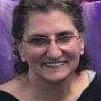
Cancer is expensive to have, and we are proud that our program is not another expense for a cancer patient.
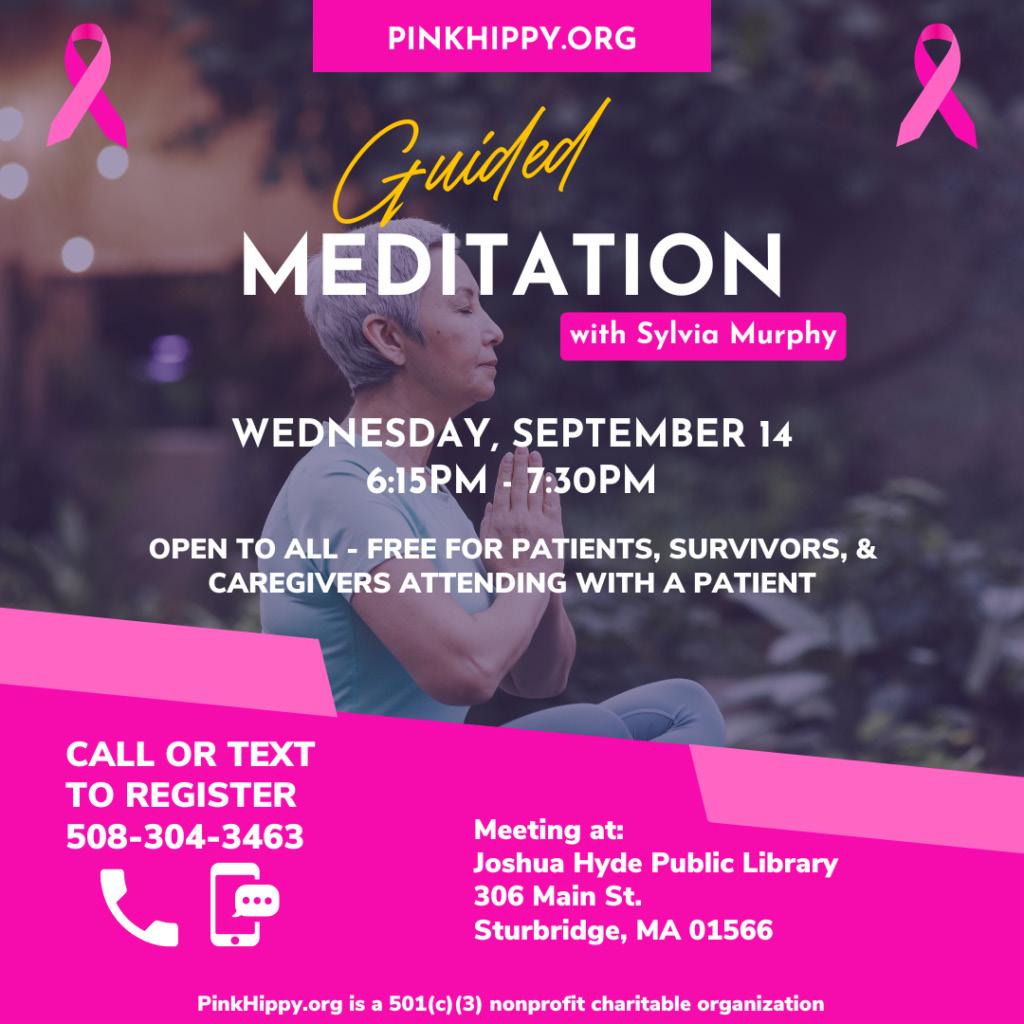
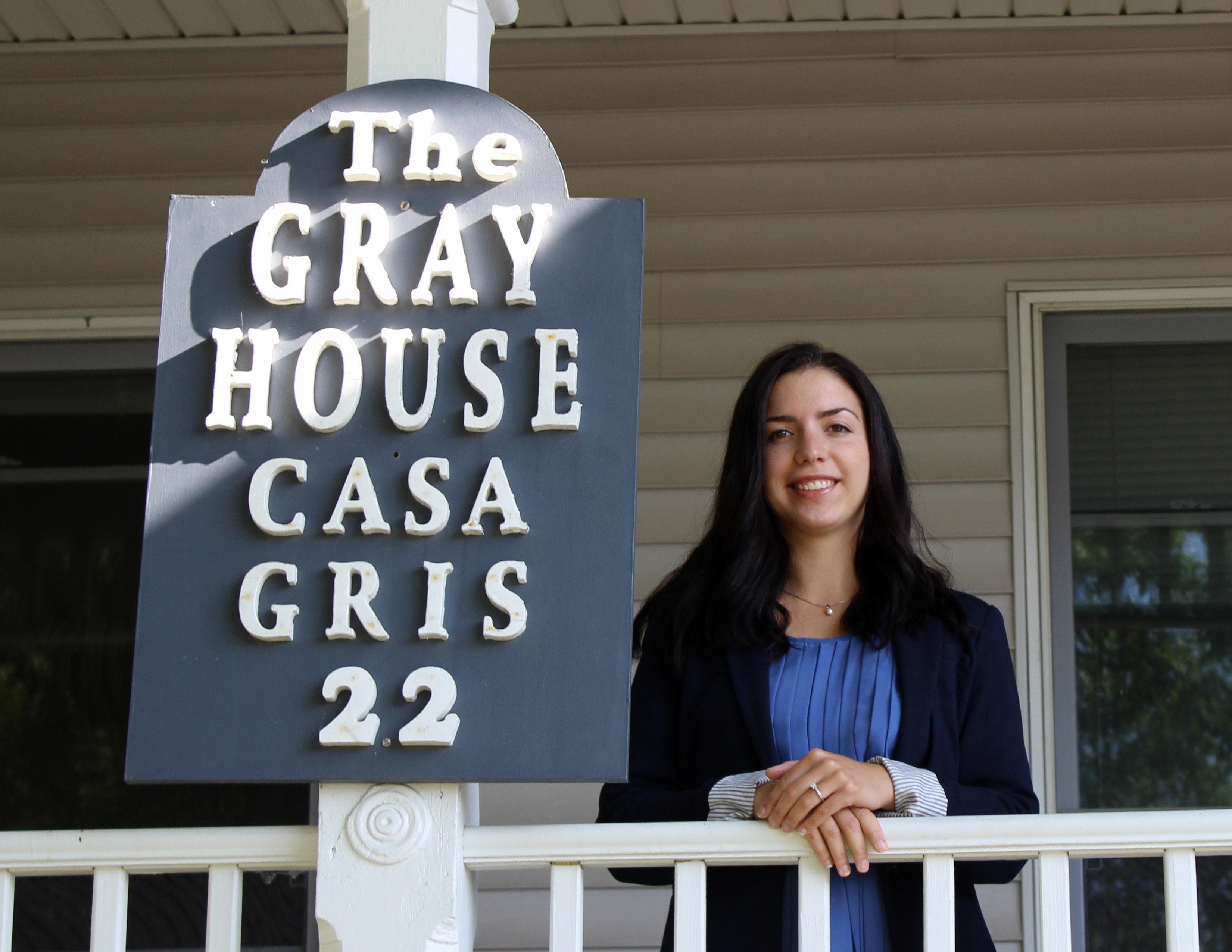
For almost 40 years, The Gray House has provided food, clothing and education services to its neighbors in need. Making room for hope and kindness in every day and treating everyone with dignity and respect are the cornerstones of this organization. Big Y has supported The Gray House through its Community Bag Program.
The mission of The Gray House is to help our neighbors facing hardships to meet their immediate and transitional needs. We do that by providing food, clothing and education services in a safe, positive environment in the north end of Springfield, Massachusetts.

A group of Sisters of St. Joseph started the agency. They had moved to the north end of Springfield and saw the poverty and violence that was so much a part of the neighborhood at the time, and they wanted to create a safe space. Their founding belief was to create a place where peace is lived and learned, and hope is shared. And they wanted to be able to provide services that met the civic, social and educational needs of those neighbors.
The founding belief was to create a place where peace is lived and learned, and hope is shared. And they wanted to be able to provide services that met the civic, social and educational needs of those neighbors.
So, in 1982, they purchased this fire-damaged, tax-delinquent, gray Victorian house at a public auction for $500. Then, with hundreds of volunteers, contractors donating their time and people coming in off the street to grab a hammer and do whatever they could, they renovated the building. They opened the doors in 1984, which is when we started offering services.
We have three main programs, all of which aim to help our neighbors break the cycle of poverty. First, we have The Market, which provides equitable access to groceries, including meat, produce, dairy and nonperishables, to households facing food insecurity. That’s definitely our largest footprint program.
Our Adult Education program helps low-income migrants and refugees improve their English language skills. The program also incorporates life skills focused on helping them to better understand the resources available to them and have the confidence to advocate for themselves and their families, improving employment opportunities.
We see people who have zero English to people who are a little bit familiar with it to people who didn’t even learn to read in their native language. So, it’s very individualized one-on-one tutoring for those students.
And then our Kids Club program provides after-school and summer programming for children in grades two through five from low-income families in Springfield. The program focuses on helping them with their homework during the school year. The summer program does a lot of literacy development, helping them combat summer learning loss. There are field trips, giving them new experiences that they might not otherwise have, and we help them build self-confidence and the skills they need to be successful in the future.
In addition to those three programs, we have a number of other distributions. For example, right now, we have
our Thanksgiving food distribution going on. Usually, over 850 families get a turkey and all of the fixings they can make at home on Thanksgiving. Another example is our Christmas wish list program, which we coordinate with the schools, shelters and the children in our program to get their actual wish lists. We’ll give those out to donors so they can go buy gifts for specific kids. When they receive the items they asked for, it makes them feel special and loved. We have a couple of departments at Big Y that very generously sponsor several kids every year.

I think the main thing is our environment. We are in a gray, Victorian house, and we’ve definitely maintained that homey feel. For a long time, the Sisters were living on the second and third floors, and they would come down and see the kids. Although they no longer reside here, they’re still very much a part of The Gray House.
Tell us a story that illustrates the good work you are doing.
We have so many stories, but one really sticks out in my mind. One Thanksgiving, we were doing our drive, and a woman pulled up with her car full of boxes and boxes of stuffing she had just purchased.
I asked her how she heard of The Gray House, and she told me her story. Years ago, she had come to The Gray House when she was at a really low point in her life. She was a single mom. She had been barely eating because she wanted to make sure that her kids had enough food. But at one point, they literally had no food left in the
house, and that’s when she knew she had to ask for help, even though she really did not want to.
She was embarrassed. There are a lot of stigmas associated with food assistance or any assistance. She was really trying to avoid asking for help but realized that for her children’s safety and health, she could no longer avoid that. So she came to The Gray House, and they set her up with enough food to fill her pantry, fill her fridge and told her to come back whenever she needed it. And most important, just encouraged her to let her know she would get through this time. She said the food was obviously extremely helpful, but just meeting the people at The Gray House and knowing that she had some sort of safety net that she didn’t think she had made all the difference.
And she did wind up coming back and using those ser-
vices again but eventually got out of that situation. She was in a much better place when she came to donate and just wanted to give back and help other families that were maybe struggling as she did.
than three-days’ notice to go from a food distribution where everybody needed to come through the back of our building into a pretty small space to a contactless, curbside process. It worked out really well, and we figured this was going to be the process for the next two or three weeks. Now, it’s almost three years later, and we’re still doing it. But it was actually a huge blessing in disguise.
Obviously, the material things we provide are really important to people, especially if it means keeping the lights on and their family fed. But having that sense of hope and knowing that there are people that have your back when you need it is one of the most important things we can provide as an agency. Just making sure that we take the time to talk to all those who come through our doors…that kind of emotional support and comfort are critical.
What is your most outstanding achievement or contribution to the community?
The way that our team responded at the start of the pandemic and then sustained that level of service is probably one of our greatest accomplishments.
I think back to the pandemic’s start and just how insane everything was. Everything was changing so quickly; there was so much uncertainty. Our team of staff, volunteers and supporters just rallied together. We had less
The process we transitioned to was much more efficient and convenient for our staff and the people we were serving. We served an average of about 1,600 individuals per month before the pandemic. After we changed to curbside, the average we’ve served since 2020 is more than 4,700 per month. It’s been a blessing because we’ve been able to meet the incredible demand that’s come out of the pandemic.
We are such a small, grassroots organization, small in terms of our staff and our budget, but we do have such a huge impact through the community, as you can see from the numbers of people served through The Market.
But then the depth of the impact we have with the people we serve through Kids’ Club and the Adult Education program, I think, reflects the Sisters’ founding belief that The Gray House should be a place where peace is lived and learned, and hope is shared. That’s something that we take to heart in everything that we do. I think the people that we serve really see that, and the people in our community know that. Making room for hope and kindness in every day and treating every-
Having that sense of hope and knowing that there are people that have your back when you need it is one of the most important things we can provide as an agency.
one with dignity and respect are really the cornerstones of our organization.
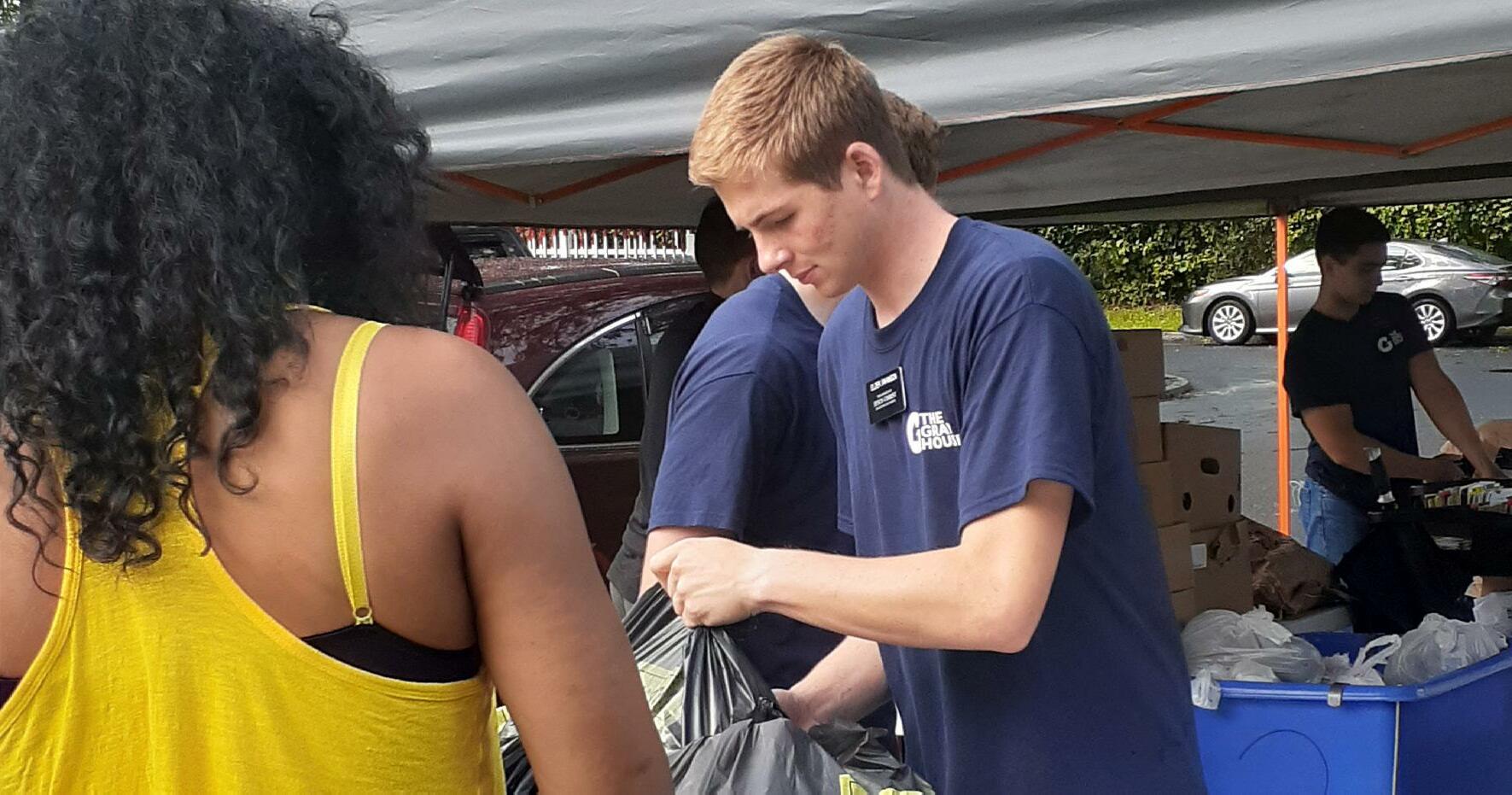
Fortunately, these funds are unrestricted within our Market program, so we will use them to help cover our Market operating costs, such as keeping the lights on and the refrigeration units running that we use to store the food.
Teresa Liberti is Grants and Strategy Manager for The Gray House. She served as Executive Director for the agency from 2016 to 2020.
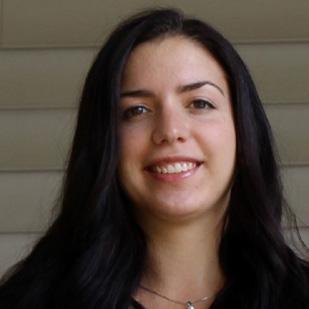
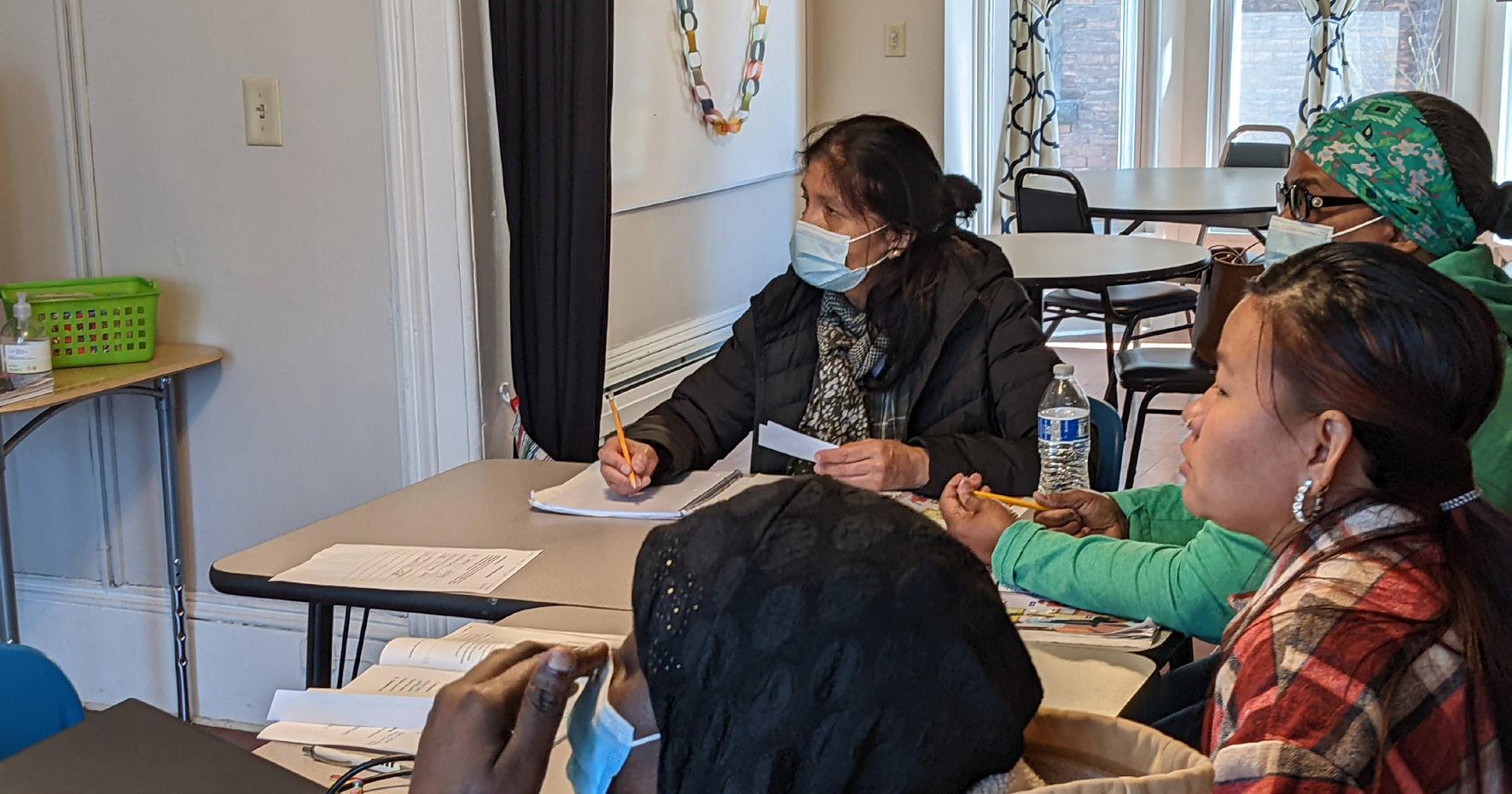

Happily Furever After Rescue grew out of the love of one special woman, Jaclyn Gartner, for one special dog, Tyler. Big Y has supported this nonprofit organization through its Community Bag Program.
Happily Furever After Rescue, founded in March 2020, is all about “making dreams come true four paws at a time.” We rescue dogs and cats locally and from kill shelters around the country. Many of the animals we save have been abandoned, abused, lost or neglected and are truly given a second “leash on life.”
I’m a one-woman show; I do it all, from arranging the transports, processing all the applications and answering every call and email, to running and managing the website and social media. It’s all me, and I absolutely love it. I wouldn’t be able to do any of this without the support of our wonderful foster families working alongside me.
I was inspired to start a nonprofit organization after adopting a sweet and beautiful big-headed, 90 lb. pittie
named Tyler. He was the dog nobody wanted; he was in a shelter for two-and-a-half years and was even adopted and returned multiple times. When I saw his flyer, it felt like fate, and I just knew he was destined to be mine. I took a chance on Tyler, and adopting him completely changed my life. He sparked my interest in animal rescue, so I began volunteering at my local shelter in 2018, then started my very own in 2020.
In December 2019, I was presented with the opportunity to save two little dogs from a severe hoarding situation in South Carolina; they only had an hour left to live. I jumped in headfirst, knowing I needed to help them. The dogs were named Bruce and Red, and they came to me very under-socialized with no experience living in a home. This was a very challenging first rescue. With love and patience, we built trust, and they were eventually adopted. Since then, we have done over 400 adoptions.
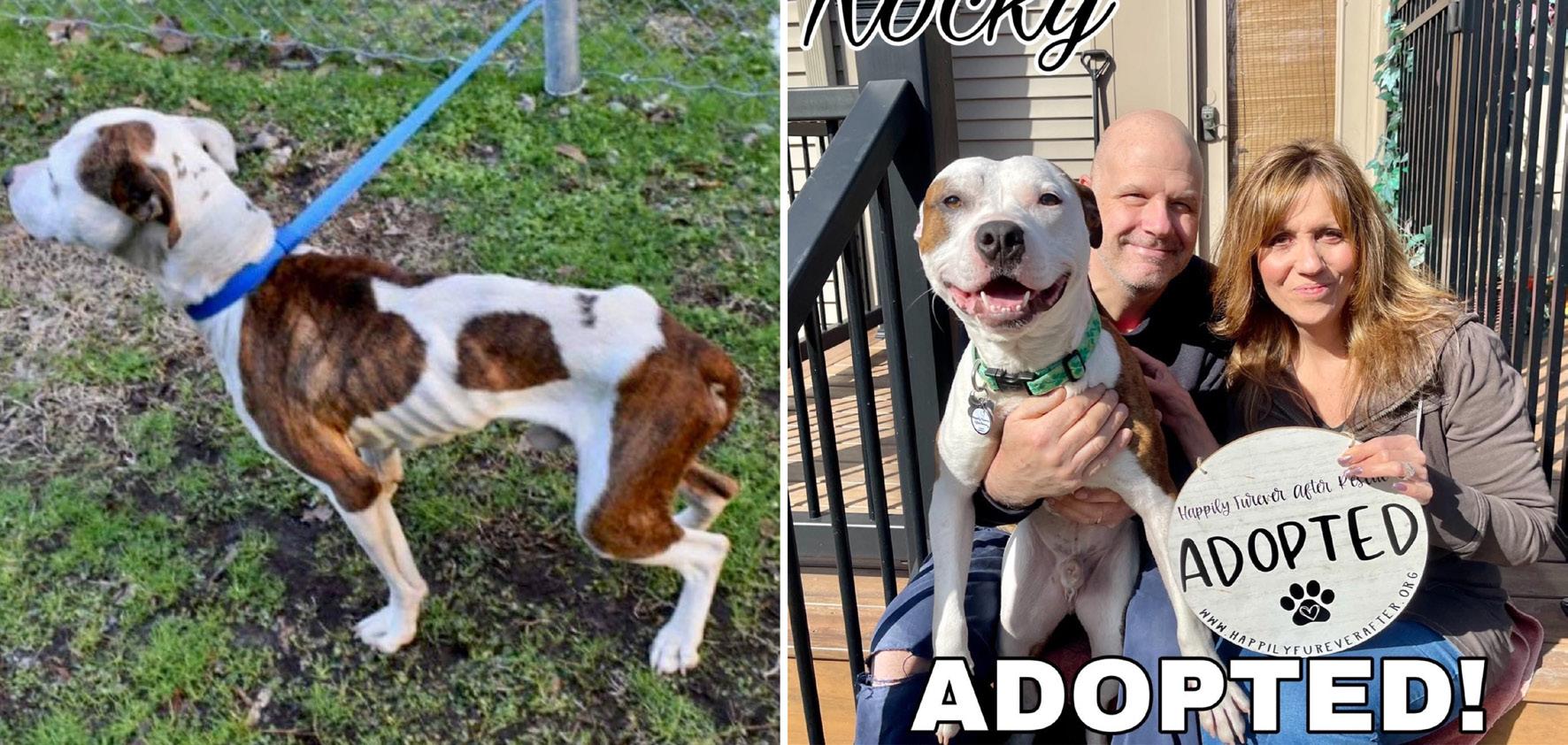
Unfortunately, I lost Tyler in December 2021 to aggressive bone cancer at the young age of seven. He made such a lasting impact on my life, putting me on this incredible path of saving lives. For that, I will forever be grateful.
We are a foster-based rescue that saves dogs and cats locally and from kill shelters throughout the country. We are able to act as a resource in helping the community with re-homing and surrender situations.
This year we’ve gotten a lot of local calls from people needing to surrender their pets and reports of abandoned animals. For example, a few weeks ago, we got a call about a senior dog left abandoned in a home after a
messy divorce. She was lucky to have found us because this 12-year-old Chihuahua was in bad shape: she had a lump on her chest, needed full dental work and, at times, had trouble walking. We provide all the medical attention our animals need, regardless of the cost. This dog needed us, and we are lucky to have been able to save her.
What sets you apart from other nonprofits in your community?
All of us here at Happily Furever After Rescue care so deeply about the animals in our care, and our passion shows. Since we are foster-based, our dogs and cats can experience home life before adoption. They learn important skills, receive basic training and, in many cases, are socialized with other animals and/or children. When you contact the rescue, you’re working directly with one person, which I believe creates a personal approach. I strive to get to know my adopters so I can place the ideal animal with them. I am proud to report that because of this, we have an extremely low return rate.
Even after adoption, many of our adopters and I keep in touch. I send handwritten “Gotcha Day” cards on their one-year anniversaries.
Tell us a story that illustrates the good work of your organization.
Happily Furever After Rescue is about saving lives. You truly feel gratitude from the animals once they come into our care and safety, considering many come from dreadful situations.
One example of these incredible rescues is Rocky, who came to us from an extreme cruelty case in North Car-
olina. He was first brought to a kill shelter where sadly, he was at risk of euthanasia, and his time was up. After enduring over a year of abuse and severe neglect from his previous owner, we had to save him and give Rocky the life he deserved. When we got him, he was severely emaciated and malnourished. The vet said Rocky was near death, weighing half his average body weight. Thankfully his previous owner was charged with animal abuse.
Since then, Rocky has been adopted and is now a happy and healthy boy at 60 lbs. He is another prime example of the resilience of these rescue animals. They were failed by some humans but still have so much love to give.
Many of the animals we save have been abandoned, abused, lost or neglected and are truly given a second “leash on life.”
Another story I’d like to share just happened this past week. We were thankfully able to save the longest resident in a shelter who was listed as “code red,” meaning her life was going to end that day. We quickly committed to her, and she took the 15-hour journey from South Carolina to Connecticut. She showed up, and as a dog from the south, she had never seen snow. When she got off the van, she immediately flopped herself into the snow and started making snow angels. It was an absolutely beautiful thing to witness, and I couldn’t help but get emotional knowing this dog almost didn’t make it.
The work that we do is hard, but through the tears, we’re able to see all the good and that makes it all worthwhile.
Being able to assist the local community is something
I’m glad we’re able to do. There have been so many animals left behind. Family members call us pleading for our help after their loved ones end up in assisted living due to old age or, worse, they have passed away. I’m happy and blessed that we can act as a safe haven for animals that need us.
be some “fails” along the way, but I can promise you, it’s worth it.
As a foster-based rescue, everything is provided to our foster volunteers. Any monetary donations accrued from the Big Y Community Bag Program will be used to purchase supplies for our dogs and cats. We provide everything imaginable – from a bed to a crate, food and treats, monthly prevention and more!
This has been such a rewarding program to participate in, and we’re so grateful to those who have supported Happily Furever After Rescue thus far.
Is there anything you would like to add?
For anyone looking to get a dog or cat, please consider adopting. Adopting a pet saves more than one animal because it makes room for the next dog or cat that needs to be rescued. When you adopt, you’re genuinely making a difference and saving lives.
If you can’t adopt, there are many other ways to support animal rescue and get involved. You could foster, donate or just spread the word about the importance of the “adopt, don’t shop” mission. I’ve personally fostered 14 animals, which resulted in keeping my eleventh and thirteenth foster dogs. I can’t say it’s easy, and there may
While our rescue is based in Connecticut, we do adoptions everywhere. We’ve had people drive as far as six to eight hours away to come to adopt one of our animals. As long as all members of the family are willing to come to meet our dogs/cats in their foster homes, we’re happy to accommodate out-of-state residents.
Jaclyn Gartner is the President and Founder of Happily Furever After Rescue. Here, she is pictured with her beloved Tyler. Adopting Tyler changed Jaclyn’s life and inspired her devotion to animal rescue.
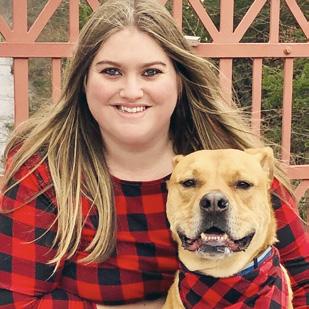
your
Adopting a pet saves more than one animal because it makes room for the next dog or cat that needs to be rescued. When you adopt, you’re genuinely making a difference and saving lives.

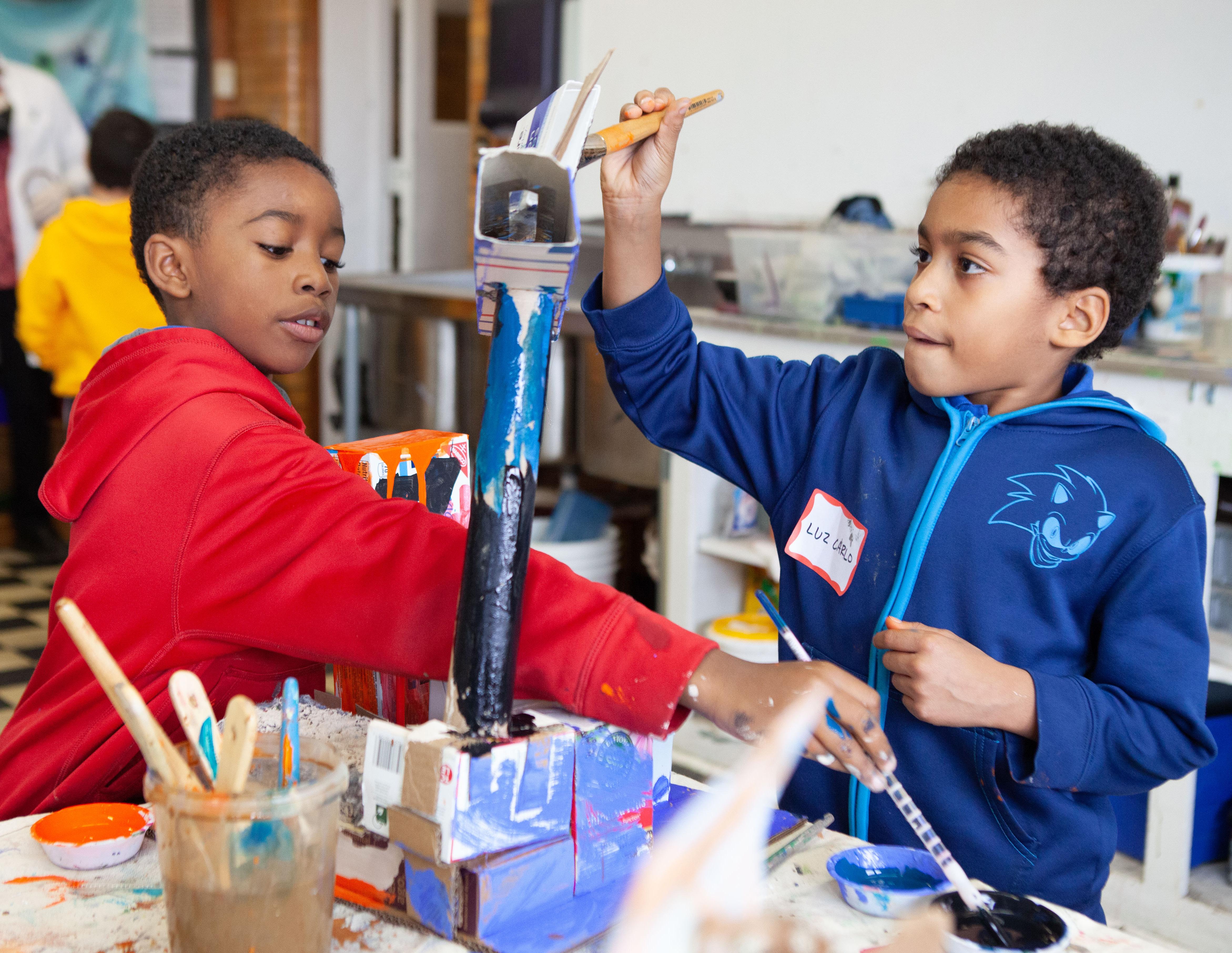
ASAP!
Providing joyful, hands-on, art-infused education to students around Connecticut is what
ASAP! is all about! Big Y has supported this nonprofit organization through its Community Bag Program.
ASAP! was founded in 1999 by JoAnne Torti, our Executive Director, as an after-school program. Since then, we have grown into an arts-infused education organization serving schools and communities across Connecticut. Our mission is to foster creative hands-on learning through the arts.
What services do you provide to the community?
JoAnne’s original goal was to provide a much-needed joyful and creative learning space for children after school and over the summer. We develop in-school, after-school and summer programs as well as celebrations, all revolving around joyful learning. Joyful learning guides everything we do.
Often, we have kids on their feet moving and making or on field trips. We have them experiencing so many different facets of life.
Our summers have expanded, too: we started with one camp, and now we have six different summer programs, including a theater intensive and summer school.
As we keep growing and evolving, we reach more and more children. While we started with 72 students in 1999, today we reach more than 10,000 children a year.
What sets you apart from other nonprofits in your community?
Our partnerships are what make our impact so great. Nothing we do is in a bubble: we invite all minds to come in. We collaborate with school teachers, counselors and principals on our in-school programming; we work with other art organizations and nature preserves on special programming and field trips, and of course, we develop programs in partnership with our teaching artists.
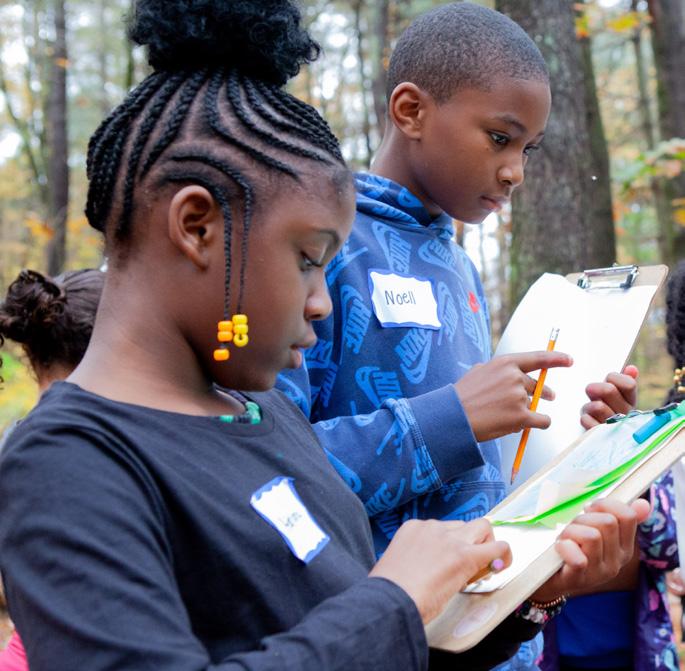
Our programs change every year because we work closely with our community, schools and individuals to identify needs. There are some staple programs like our in-school Metamorphosis Project or our Celebration of Young Writers event, but because the needs change, we change with those needs. Our in-school programs are created in alignment with school curricula. We do many different programs in this capacity, for example, using the artistic process to understand science or embodying math equations through movement and dance.
Our curriculum-aligned programs are quite unique. They are an opportunity for students to explore a variety of topics and express themselves through the creative process and art-making. We often survey our students, asking, what are you most interested in learning? Do you like to learn outside of the classroom? Do you like to learn in small groups? How do you like to learn best? That way, we can adapt our programs to students’ passions and, at the same time, create inclusive spaces. We have pre-k programs in schools where 50% of the kids are special needs, and 50% are typical learners.
Because we create in-school programs, we’re able to
Our mission is to foster creative hands-on learning through the arts.
reach students with every different kind of learning style, including special needs students. We know schools are often challenged with that, and we collaborate with both students and teachers (through our professional development sessions) to develop programming that serves all students.
We’re fully present from the moment program development begins to the moment we leave the learning space.
Tell us a story that illustrates the good work of your organization.
In meetings with schools where they spoke about their needs, we heard that music education is lacking for students who identify as special needs. Unfortunately, in some schools, music is not an option for these students at all.

After these meetings, we started seeking funding for schools that could not afford music ed for special needs students. Through grant funding, we’ve secured a yearlong music program called Global Hand Percussion for students at the high school level who identify as special needs learners.
We are fortunate to have John Marshall, a world-renowned percussionist and celebrated teaching artist, leading this program. He’s such a remarkable teacher; his level of connection and care for every single child in the classroom is so inspiring. And he is an incredibly talented musician who brings his own authentic instruments from around the world for the students to play. It’s wonderful to see the students connect with each other through rhythm and song and to experience a new, somatic practice like hand percussion.
This is hard to answer because I see the impact we have on individuals, which is just as important as reaching a large number. But what we really hold near and dear is our summer camp. It runs for two weeks, and we offer a wide range of arts, movement and nature programming. This year, we will have about 150 campers in grades 1 through 10.
What makes summer camp so special is that we bring together campers from many different walks of life. We partner with an organization called New Opportunities, which provides food, healthcare, and other services to families at or below the poverty level in the city of Torrington, to provide full scholarships for about 52 children to come to our camp.
We never turn a child away. So, even if a family says they cannot afford our camp, we find a way to bring them in.
And that simple act of including anyone creates such a beautiful community. Our campers create friendships year after year, and that’s what makes them so excited to return. They create together; they listen to one another; they provide unique perspectives. It’s amazing to witness.
It’s important that people know that we could not do what we do without individuals and partners like Big Y. There is very little funding available to school districts for the arts, so community support for organizations like
ours is critical to our survival.
It varies state by state, but every arts administrator or educator will tell you that creative learning is lacking within their district. It’s vital that people understand that they can make a difference, whether by volunteering, donating or just talking about how important arts-infused education is.

Our partnerships are what make our impact so great. Nothing we do is in a bubble: we invite all minds to come in.
How are you using the funds you’ve received from the Big Y Community Bag Program?
We will use the funds to support our 18th annual Celebration of Young Writers, where students in grades K through 12 are invited to submit a piece of their writing
for a chance to read it in front of a live audience.
Students whose pieces are chosen by our panel of amazing writers and authors get to work with a coach to prepare to read their pieces aloud at the Celebration of Young Writers, held in June at the Spring Hill Arts Gathering (SHAG). SHAG fest is a four-day festival celebrating live arts, music and community building. Celebration of Young Writers attendees are welcome to stay at SHAG for the rest of the evening’s activities.
Is there anything you would like to add?
I want to thank Big Y! We are so grateful to be selected for this opportunity, which further supports our mission to provide joyful, hands-on, art-infused education to students around Connecticut.
Ali Psomas is Program Director for ASAP! and has been since 2015. She is most passionate about providing opportunities for children that normally are not given access to quality educational programs.

For more information about the Programs and to view more Impact Stories, please visit bigy.2givelocal.com
Jim Brennan
Co-Founder & COO 207.351.6903 jimb@psitmatters.com
Melissa Hansen Senior Program Manager 603.380.9400, ext. 109 melissah@psitmatters.com
